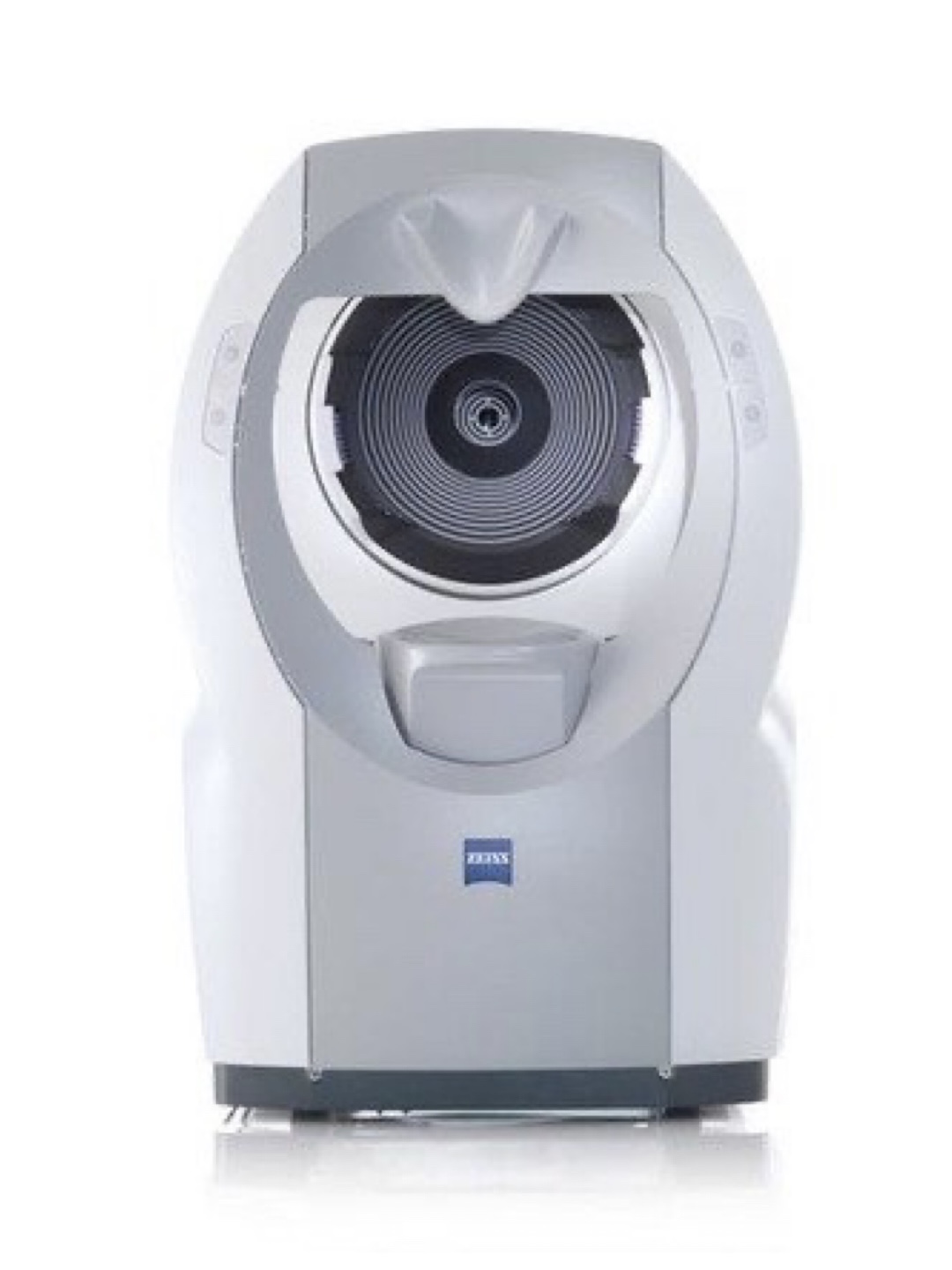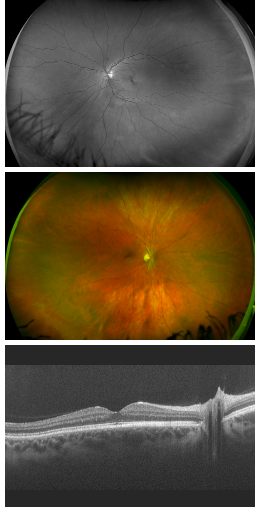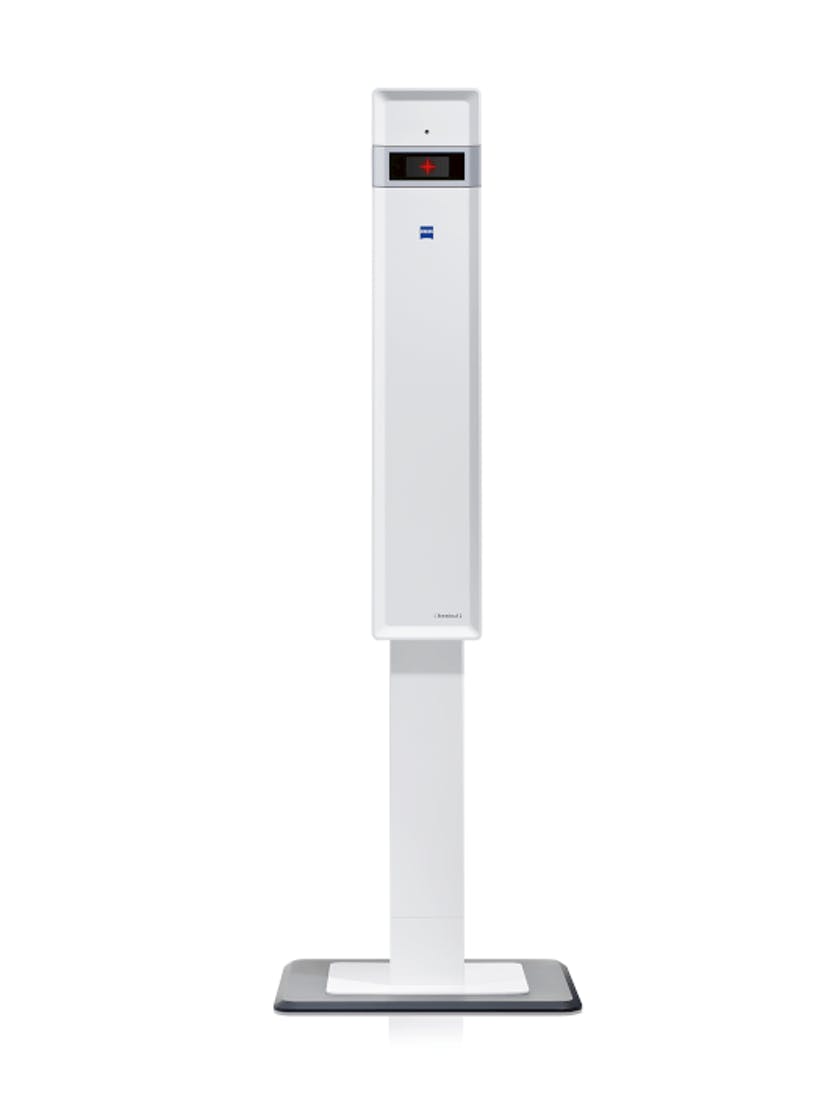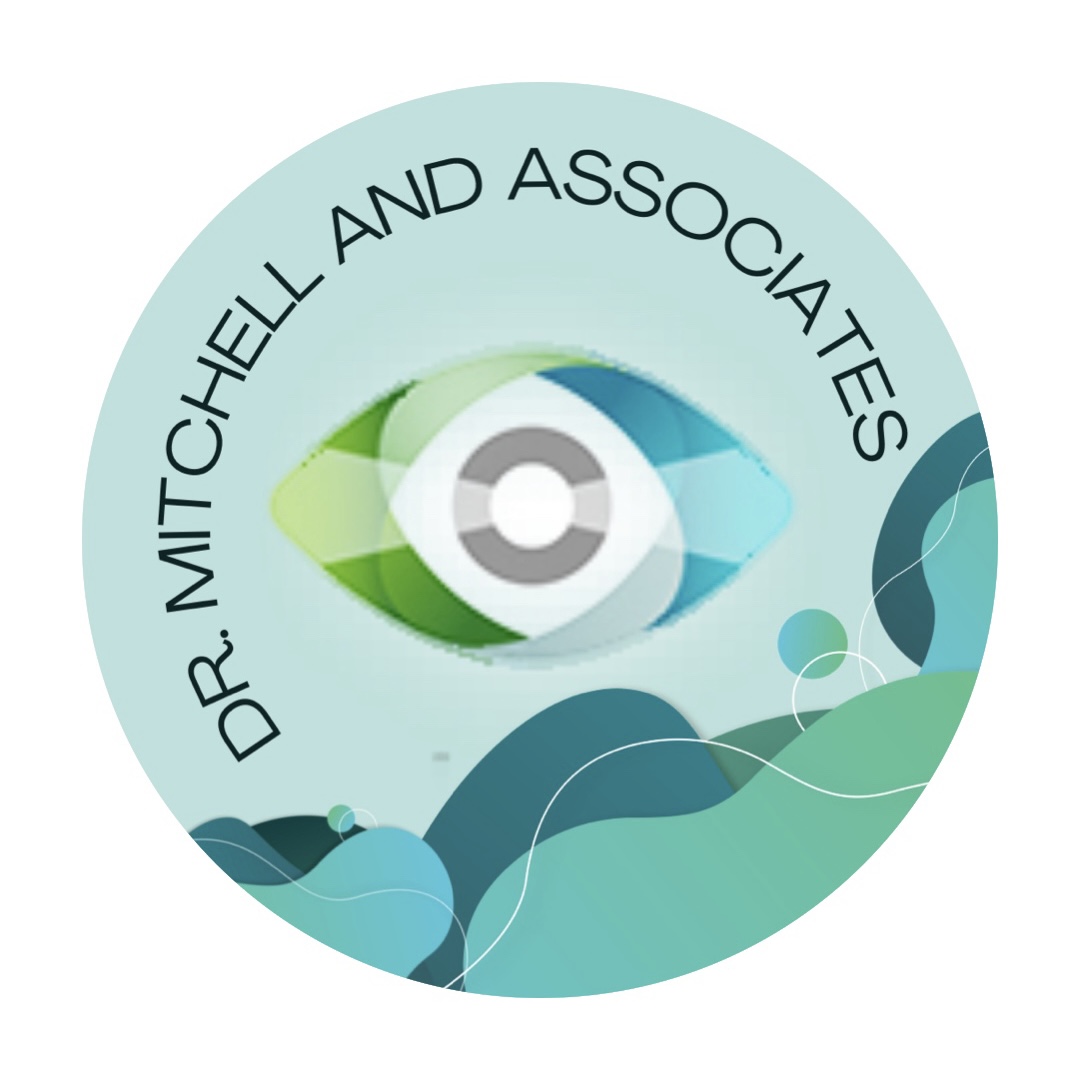| |
What do we do?
| |
Office Equipment

The i.Profiler Plus is a 4-in-1 compact system with ocular wavefront abberometer, autorefractor, ATLAS corneal topographer, and keratometer. This fully automated procedure enables all measurements of both eyes to be collected in approximately 60 seconds with efficient touch-screen control. The eye's refractive power distribution is analyzed and represented across the entire pupil aperture.

The measurement of intraocular pressure is part of every professional glaucoma screening. The VISUPLAN® 500 makes this examination very easy and, complementing the Goldman tonometry, does not require contact or anesthesia. The measurement is made with a soft puff of air and can be administered by your practice team.

Optos Monaco Ultra WideField Retina Imaging is the sole UWF imaging device having an integrated OCT (optical Coherence Tomogrpahy) to help eye care professionals enhance their clinical examination. The sole ultra-widefiled retinal imaging devide with integrated OCT, Monaco produces a 200° single-capture optomap image in less than 1/2 second and provides cross-sectional 40° OCT perspectives of retinal structures.
Monaco is a streamlined desktop UWF retinal imaging apparatus, which provides greater imaging performance, according to a company press release.
Provincial insurance does not cover advanced screening technology. We will be performing the Optomap retinal exam for a fee of $30.00 ($25.00 for seniors an children).

The i.Terminal 2 is the latest concentration device position of wear fitting parameters are captured digitally for advanced lens customization. Lens fitting plays a significant role in maximizing visual comfort as fitting errors can cause up to a 40% loss in lens performance. i.Terminal 2 captures and calculates your patient's individual parameters of 0.1 mm which can result in a decreased complain rate, reduced non-adapts and more relaxed vision for your patients.
| |
Contact Lenses
Fitting a contact lens includes evaluating the eye health, vision, comfort, and alignment, both in our office and in your own daily environment. We believe that a person should use the best contact lens available for their eyes. There are hundreds of different types of contact lenses available in the market today. Each person is unique in their contact lens demands due to different wearing schedules, job requirements, oxygen needs, prescription, and eye health.
A new generation of “super-permeable” contact lenses can transmit unprecedented amounts of oxygen to your cornea and, in some cases, enable 30 consecutive days of wear without removal. Silicone hydrogel contact lenses represent a breakthrough over traditional hydrogel soft contact lenses, because silicone lets so much oxygen (essential for a healthy cornea) to pass through. There are several different types of silicone hydrogels, some which target to help dryness and discomfort.
Perhaps the most convenient lens on the market, this lens is worn for a single use. This eliminates cleaning, solutions, and solution related reactions. Since a brand new lens is used for each wear, problems from infection, allergy, and protein build-up are virtually eliminated.
This wearing mode offers a nice balance between changing lenses to keep them clean and cost effectiveness. This is the most common modality worn.
This is the traditional type of lens that is kept for one to two years, depending on the condition of the lens. This type of lens is usually recommended for patients with unique or unusual prescriptions. The lens is removed each night and cleaned for use the next day. More thorough cleaning is usually needed to ensure comfortable healthy lenses.
These soft contact lenses correct for nearsightedness or farsightedness along with astigmatism. These lenses have been greatly improved over the last few years with advances in lathing and molding technology, so even if a person has been told they cannot wear contacts in the past, it is possible now. They are available in bi-weekly, monthly, or conventional wearing modalities.
Extended wear refers to a lens that has been approved as safe and healthy to sleep in. Although this modality has not been recommended by optometrists over the last ten years or so, new lens materials have made this a safe option again. Sleeping in lenses in the past has reduced the amount of oxygen that gets to the cornea resulting in decreased corneal health and increased risk of infection. The new material, called “silicone hydrogel”, is up tot eight times more permeable to oxygen than any other contact lens. It has approval to wear for 30 days continuously. This may not be for everybody, and routine follow-up is needed to ensure good eye health.
This is a contact lens that has two or more focal distances. It is generally used for patients who have difficulty focusing to read when they are wearing their contacts. This usually occurs in the early to mid forties. The lens has a “simultaneous design”, which means that a person is looking through the near and distance portion of the lens at all times. This makes it unnecessary to look down to use the reading optics. These lenses are available in daily, bi-weekly, monthly, or conventional modalities.
These lenses are made from a more rigid material known as silicon acrylate. They correct for nearsightedness, farsightedness, astigmatism, and are available as a bifocal. They give great vision, are durable, and are healthy for the eye. Adaptation time is longer for gas permeable lenses, which makes them better for full time use, instead of occasional use.
Contact Lens Form
| |
Patient Fees
Eye Examination Fees
- Ages 18 and under - Complete Eye Exam w/ annual MSP = $55
- Ages 19-64– Complete Eye Exam = $165.00
- Ages 65+ – Complete Eye Exam w/ annual MSP = $95.00
- Minor Eye Exam = $40.00 - $60.00
- Verification of Prescription = No charge (0 – 3 months from last eye exam in our office), $40.00 (4 – 6 months), $75.00 (7 – 11 months), FULL EYE EXAM (1 year and over)
Doctors of optometry are eligible to set their own fees for services and may bill MSP on behalf of their patients when there is coverage available. Patients are expected to pay the balance, if there is one. In advance of an appointment, the patient should be advised of the expected cost of the services, and whether MSP may cover any or all of it.
Eye Examination Benefits (MSP): Routine eye exams are not a MSP benefit for individuals aged 19 - 64 years. MSP provides as an insured benefit routine eye examinations for children under he age of 19 and over the age of 65. For more information please visit
 https://www2.gov.bc.ca/
https://www2.gov.bc.ca/Medical Services Plan (MSP) provides limited or partial coverage for optometric services as a benefit for the following population groups:
- Children aged 0–18 years: one full eye examination annually
- Adults aged 19–64: eye exams not covered by MSP unless medically required
- Seniors aged 65+: one full eye examination annually
MSP currently covers:
- $47.08 for a full eye exam
- $29.92 for a minor or follow-up examination
Contact Fitting Fees
- Contact Lens Insertion & Removal Training = $35.00
- Fit Spherical Contact Lens = $100.00
- Fit Mono-vision Contact Lens = $125.00
- Fit Astigmatism Contact Lens = $125.00
- Fit Bifocal Contact Lens = $150.00
| |
Refractive Surgery Co-Management
- Pre-Operative Exam = $175.00
- Post-Operative Exams = $450.00 (5 follow-up appointments)
- Enhancement Follow-Up = $275.00 (5 follow-up appointments)
